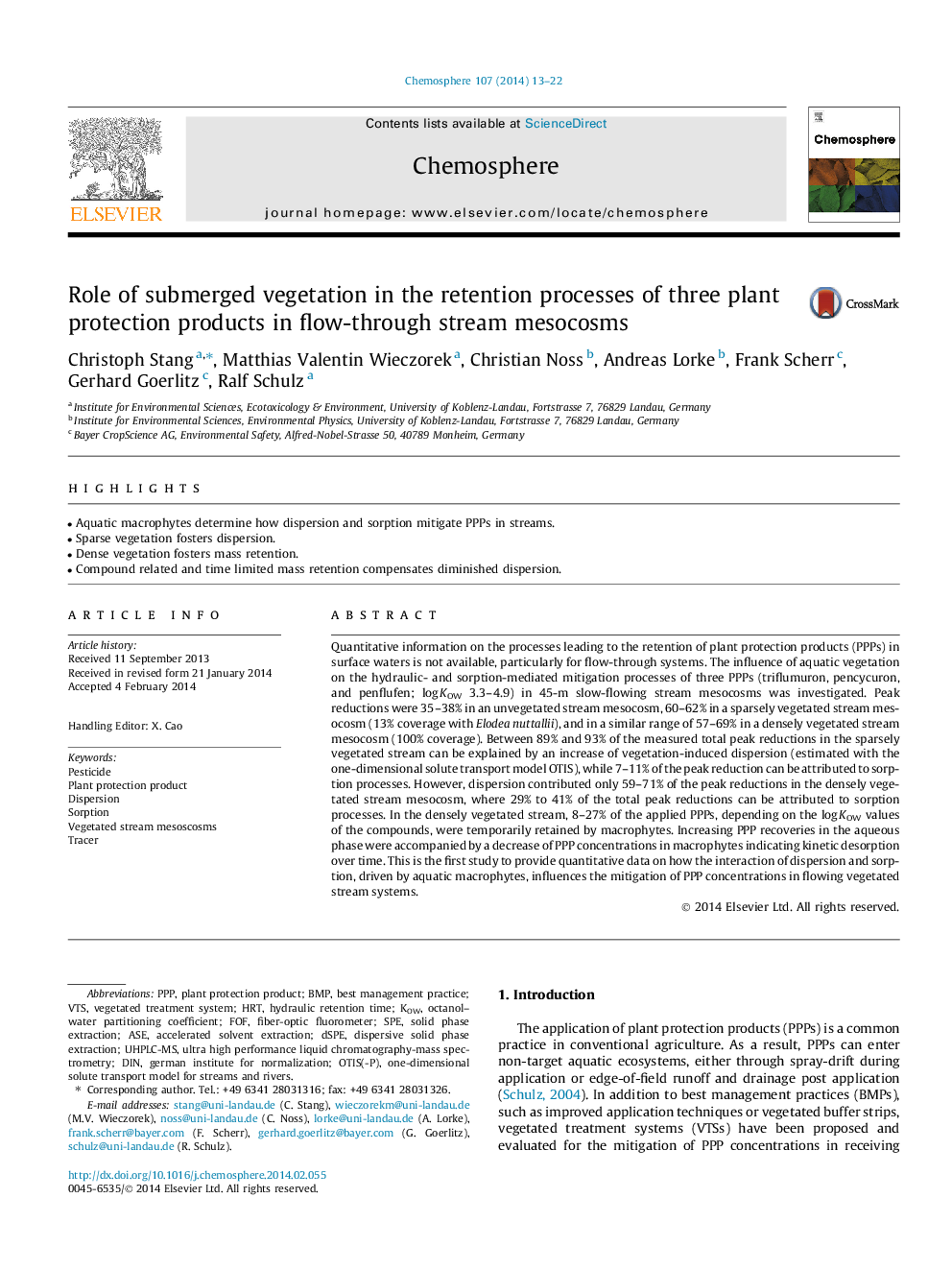| Article ID | Journal | Published Year | Pages | File Type |
|---|---|---|---|---|
| 6309091 | Chemosphere | 2014 | 10 Pages |
Abstract
Quantitative information on the processes leading to the retention of plant protection products (PPPs) in surface waters is not available, particularly for flow-through systems. The influence of aquatic vegetation on the hydraulic- and sorption-mediated mitigation processes of three PPPs (triflumuron, pencycuron, and penflufen; log KOW 3.3-4.9) in 45-m slow-flowing stream mesocosms was investigated. Peak reductions were 35-38% in an unvegetated stream mesocosm, 60-62% in a sparsely vegetated stream mesocosm (13% coverage with Elodea nuttallii), and in a similar range of 57-69% in a densely vegetated stream mesocosm (100% coverage). Between 89% and 93% of the measured total peak reductions in the sparsely vegetated stream can be explained by an increase of vegetation-induced dispersion (estimated with the one-dimensional solute transport model OTIS), while 7-11% of the peak reduction can be attributed to sorption processes. However, dispersion contributed only 59-71% of the peak reductions in the densely vegetated stream mesocosm, where 29% to 41% of the total peak reductions can be attributed to sorption processes. In the densely vegetated stream, 8-27% of the applied PPPs, depending on the log KOW values of the compounds, were temporarily retained by macrophytes. Increasing PPP recoveries in the aqueous phase were accompanied by a decrease of PPP concentrations in macrophytes indicating kinetic desorption over time. This is the first study to provide quantitative data on how the interaction of dispersion and sorption, driven by aquatic macrophytes, influences the mitigation of PPP concentrations in flowing vegetated stream systems.
Keywords
Related Topics
Life Sciences
Environmental Science
Environmental Chemistry
Authors
Christoph Stang, Matthias Valentin Wieczorek, Christian Noss, Andreas Lorke, Frank Scherr, Gerhard Goerlitz, Ralf Schulz,
